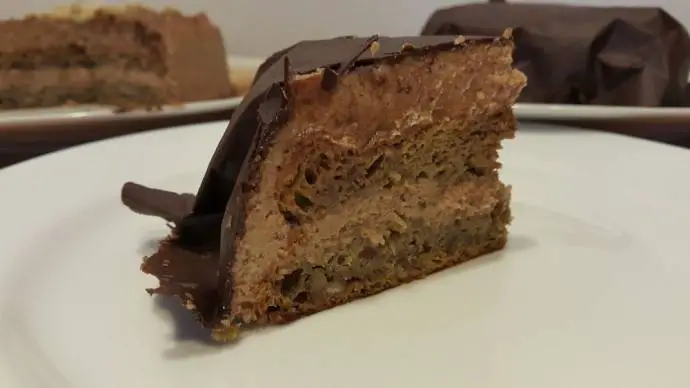November 4, 2018
Chestnuts are still widely available in stores these days, and some lucky folk can even go and pick them in the forests across the country. So we thought this might be a good time for a chestnut cake, especially since St. Martin Day (Martinovanje) is approaching, and the cake is a very welcoming addition to a table full of the traditional harvest feast dishes.
Chestnuts are quite a delicate ingredient. Peeling and pureeing them must take place while they are still warm, and can even then make quite a lot of mess. To avoid such problems sometimes people boil chestnuts in rounds of ten, so that they don’t cool down too fast and cause problems when peeling. We did, however, just boil them all together and avoided peeling by simply cutting them in half and squeezing the meat out as we don’t need them to stay in one piece for a puree to be made. They did, however, cool down too much for a puree to be made smoothly, which is why we decided to use chopped almonds to cover the inconsistencies of smoothness in the cream, and it turned out to be quite a good trick.
There is plenty of variety in making a chestnut cake, but the basic ingredients that shouldn’t be left out are chestnuts, rum, fresh cream and dark chocolate.
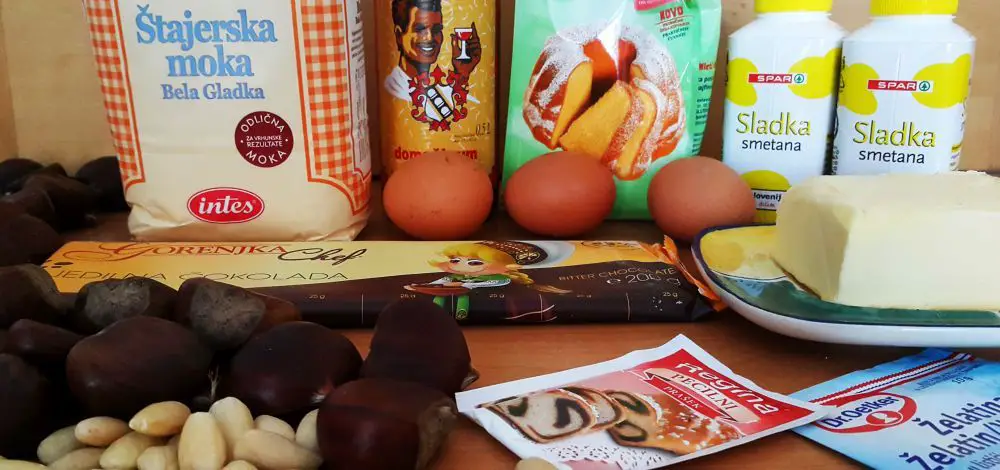
Ingredients:
The first thing to make is a chestnut puree: cook the chestnuts for about an hour or a bit longer if they are as big as ours. Take them out of the boiling water, cut each in half and squeeze the meat out while still warm. Make sure to remove any skin that comes out along with the meat. How deep into the nut this skin grows depends on the chestnut tree, so those lucky enough to live near a forest with chestnut trees should pay attention to the nuts picked under specific trees – some are better than the others in this respect.
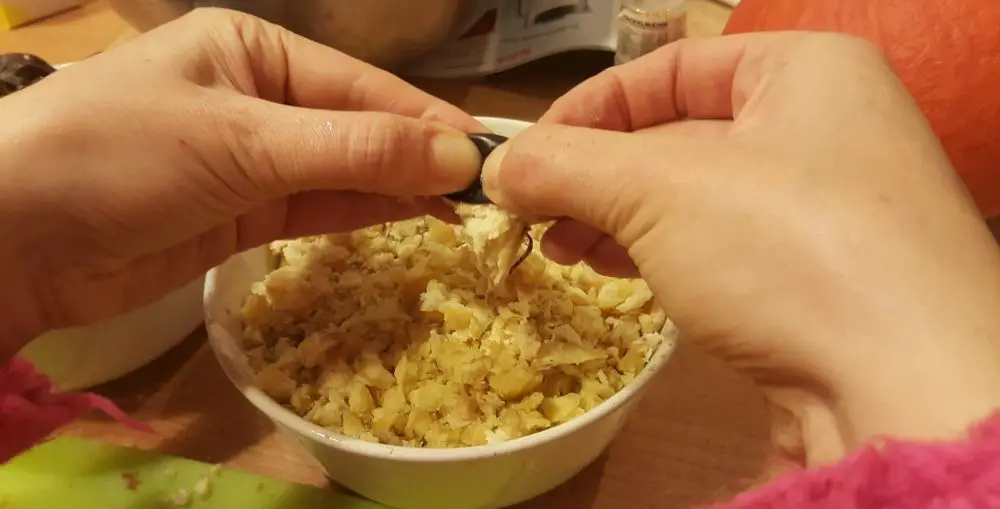
The best way of making a puree is to send (warm) chestnuts through a food mill –I hear some use garlic press instead – or at least a food processor. Blenders usually work for more liquid substances, but unfortunately that’s all that was available to us. So we used it: we added some sugar and fresh cream to the chestnut and blended the mixture a bit, then opened and mixed it with a spoon, blended it a bit more, and so on until we thought the puree was more or less without lumps. Not an ideal circumstances, but as announced at the beginning of this text, we covered this inconsistency with chopped almonds added to the cake dough.
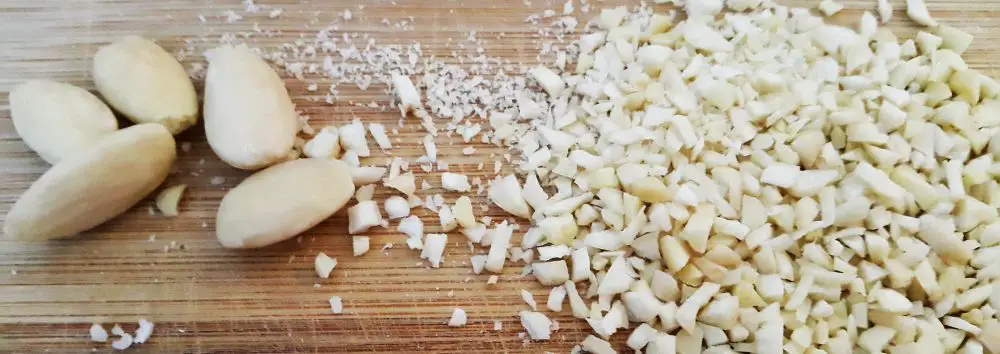
For the dough, preheat the oven to 175 degrees and spread butter and flour on the baking tray. We had two small baking trays instead of a one big one, which comes in handy when experimenting like we tend to do – a major mistake can only cost you half the cake not a whole one. Besides, it appears to be easier to cover a small cake in chocolate paper than a big one, a procedure you can observe at the end of this recipe.
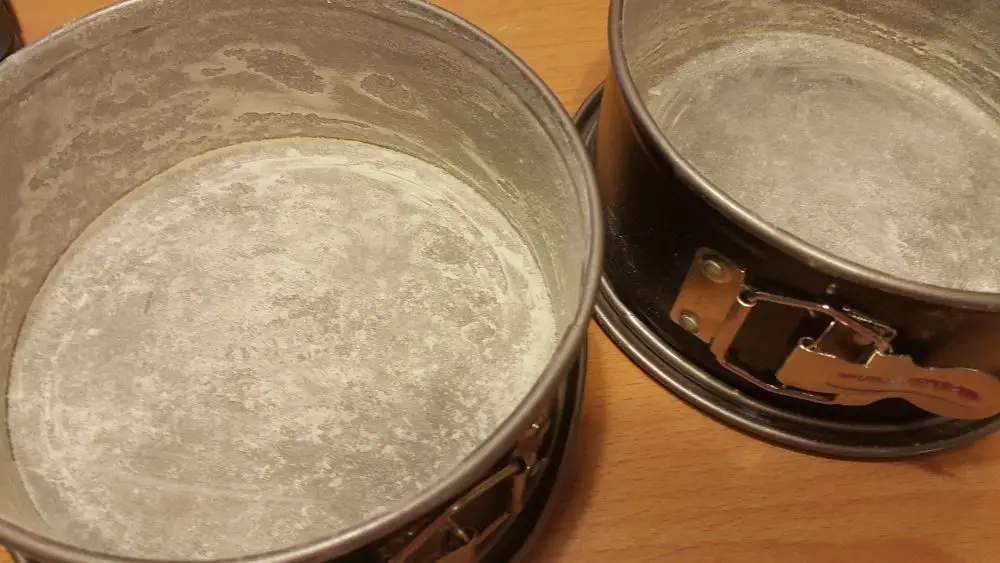
For the cake dough, separate egg whites from egg yolks and beat the egg whites until soft peaks form, add half the sugar and beat until stiff. In another bowl beat egg yolks until they become foamy and bright yellowish, then slowly mix in the remaining sugar, butter, chestnut puree and flour – stir it in before using a mixer so that it doesn’t get blown all over the kitchen. Into this mixture then slowly stir in 1/3 of the egg white foam, and after this is evenly spread add the remaining 2/3. The last thing to add, carefully, are the chopped almonds.
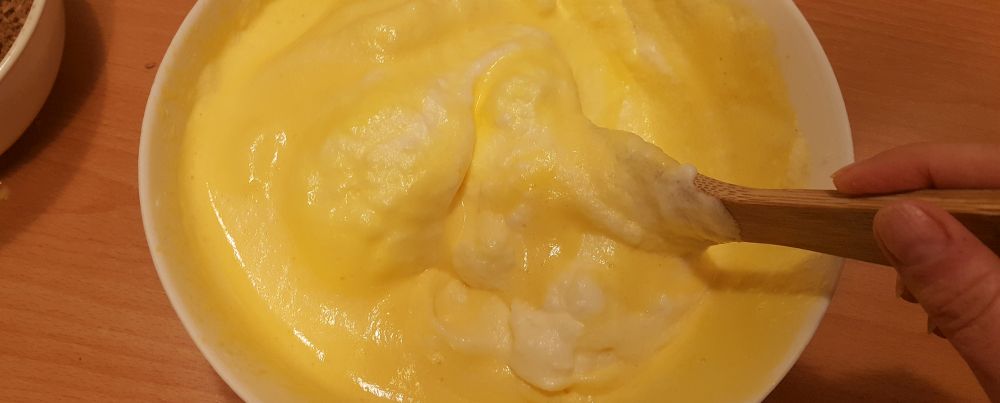
Place the foamy substance into the baking trays and bake at 175°C for 30 minutes, then turn down to 160° and bake some 20 minutes more. Then turn off the oven and leave the cake inside for another half an hour or so, so that it doesn’t collapse completely. Take out of the oven and cut in half.
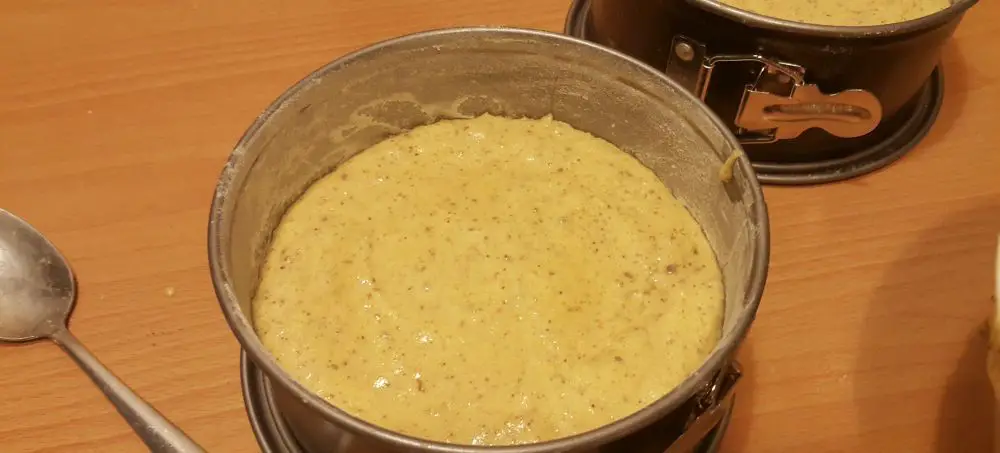
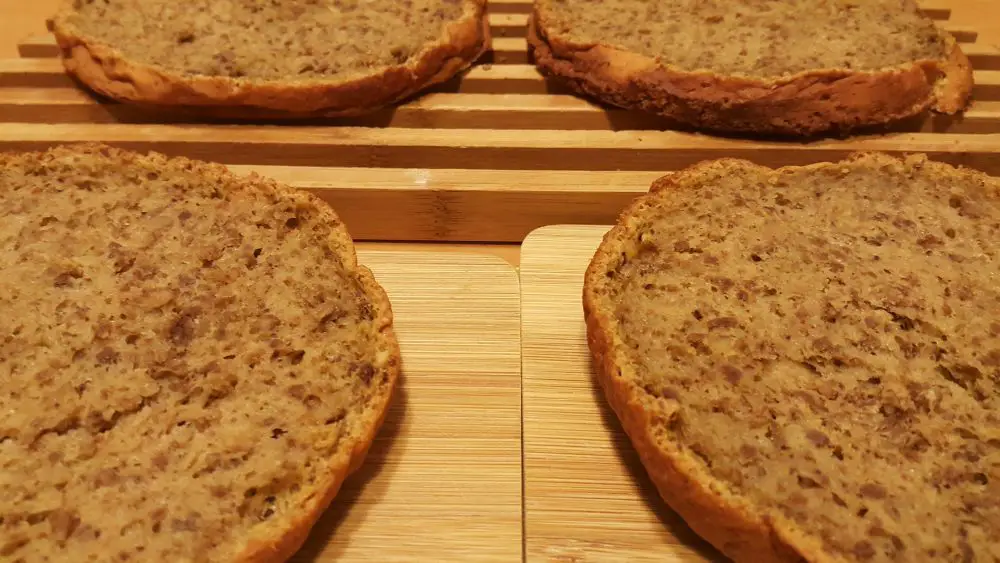
The cream. Put 250 ml of fresh cream on the stove and melt 80g of dark chocolate in it.
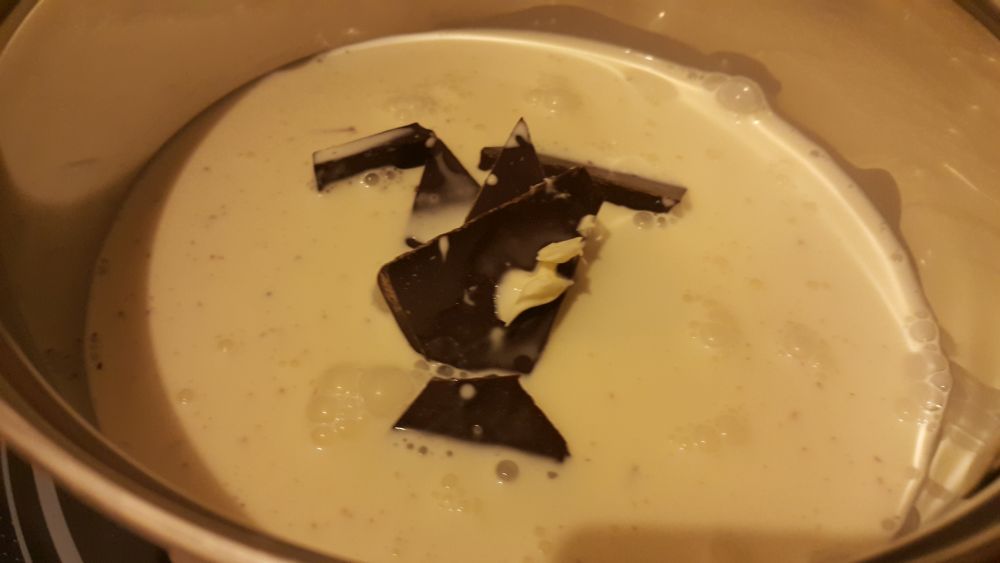
Cool this down and place it in the fridge until completely cold.
Then beat it into a cream and hand stir in the chestnut puree. At this point it became evident that our puree was full of little lumps that looked as if the cream had turned into a curd, but we didn’t panic and simply added a bit of rum to both the cream and the cook.
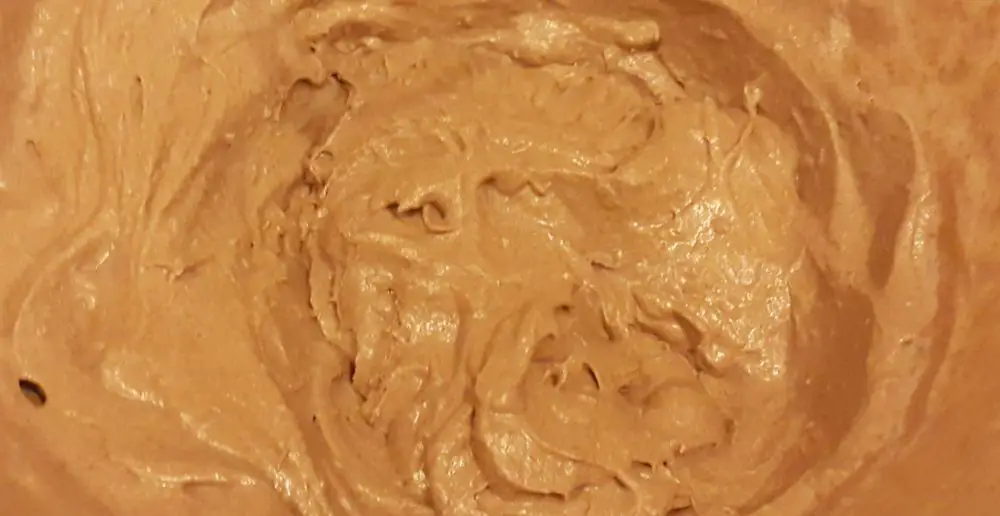
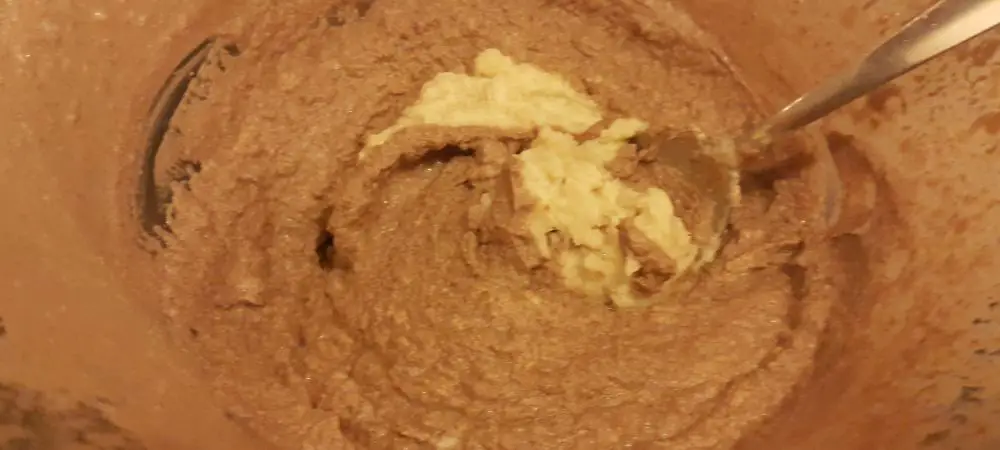
Beat the fresh cream and add 1/3 to the mixture, followed by the remaining 2/3.
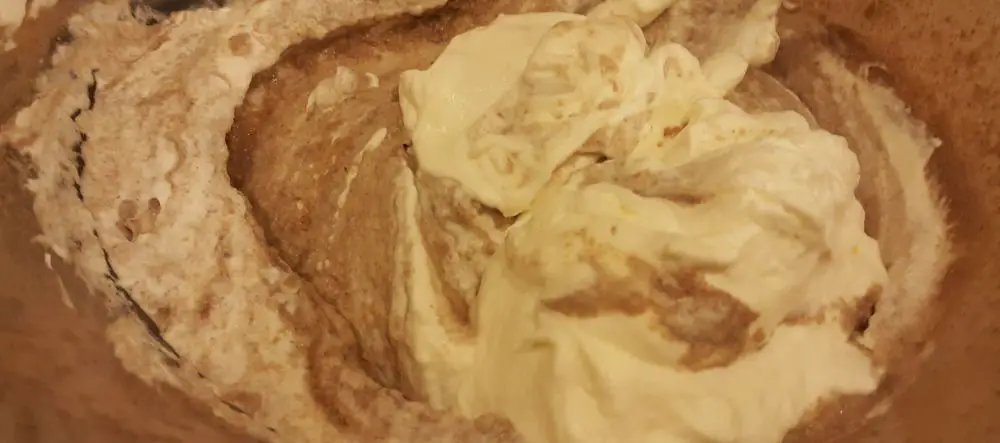
If you are worried that the cream will not keep the cake together, you can dissolve two sheets of gelatine in some warm water and add it to the mixture, although with smaller cakes it worked just as well without it.
You can now moisten the cake layers with sweet, rummy water and then put the cream in between and on the top of the cake layers. Then you can simply sprinkle the cake with some chocolate powder or, much better, decorate it with a covering sheet of chocolate which will also contribute a great deal to your cake’s flavour, as well as impressing people who don’t know how it’s done.
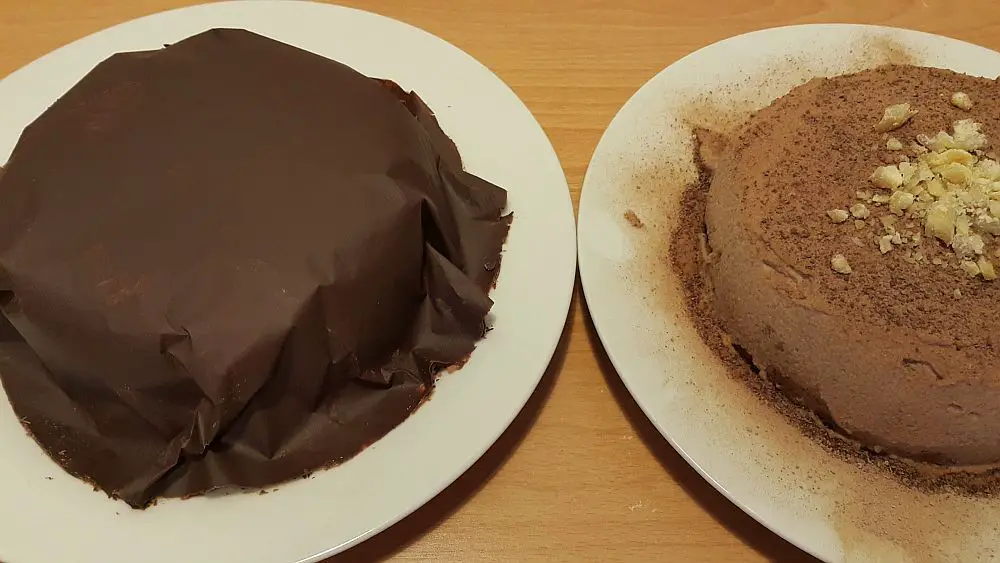
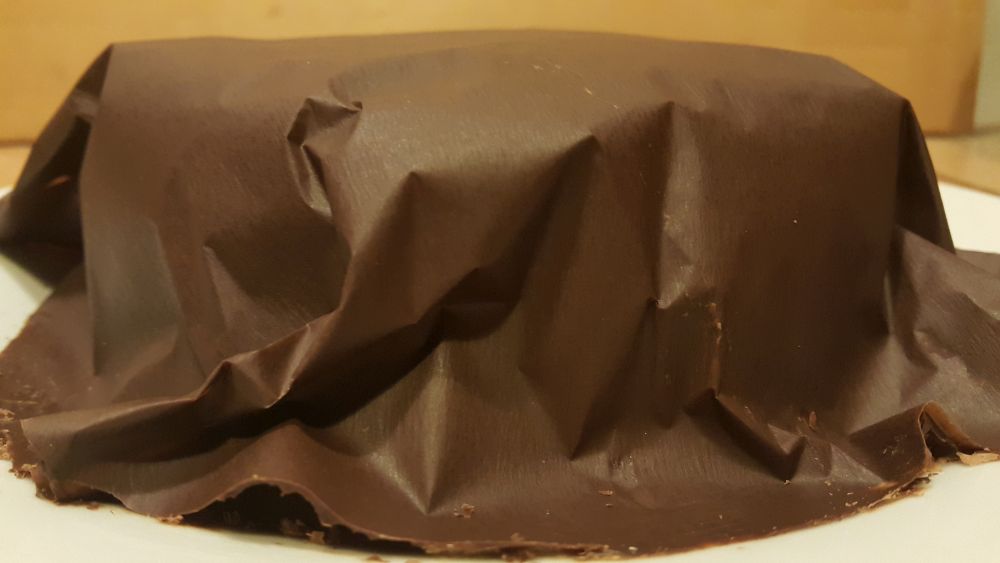
The paper look of the chocolate on the cake is actually achieved with paper: 100-120g of cooking chocolate is melted in a pan which is placed in warm water that should not be heated over 50°C.
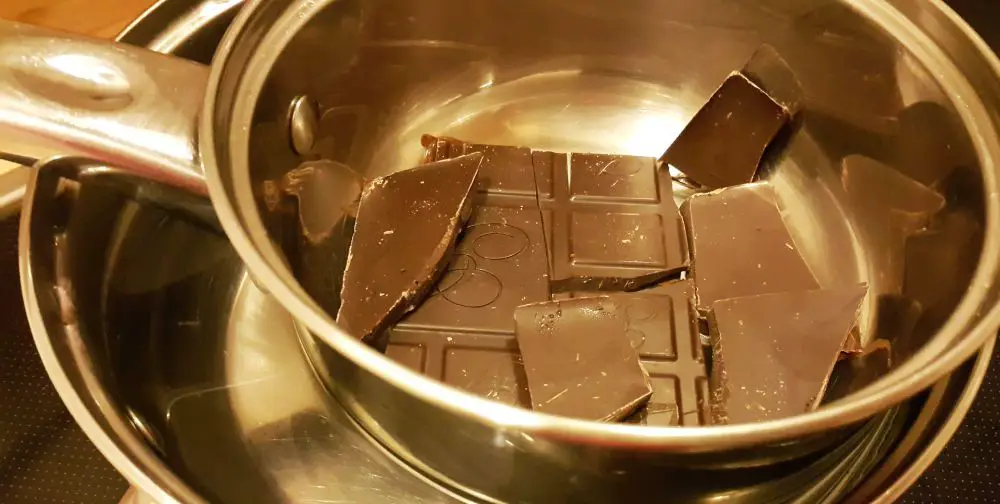
From the baking paper we cut out a circle that should approximately cover the top and sides of the cake.
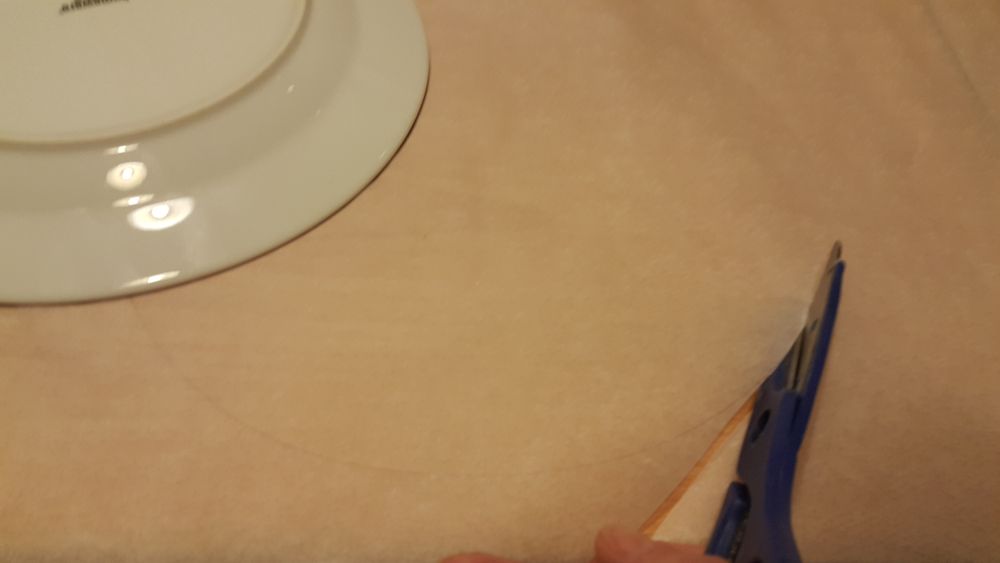
Spread the chocolate across the paper and let it rest for a minute if the chocolate is too runny.
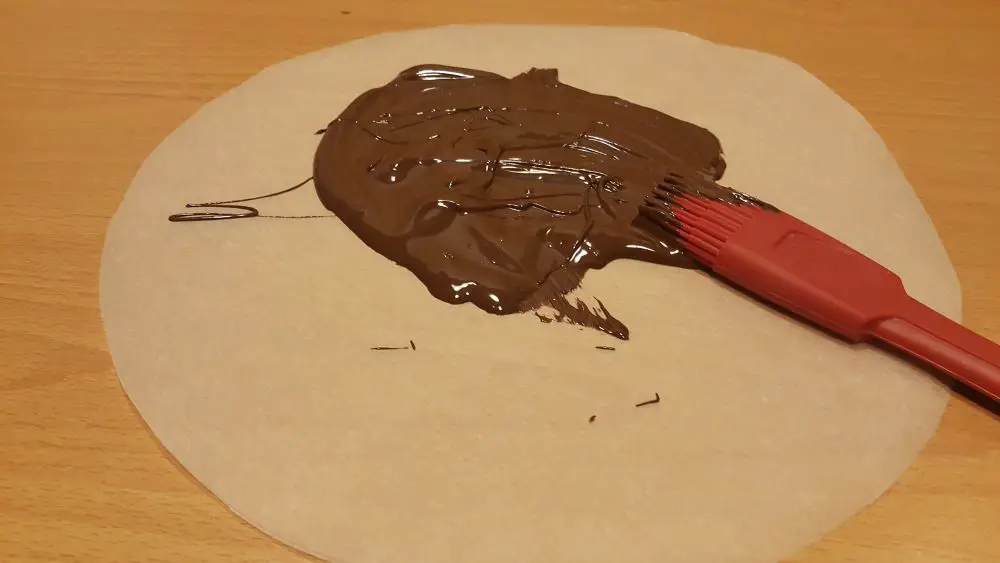
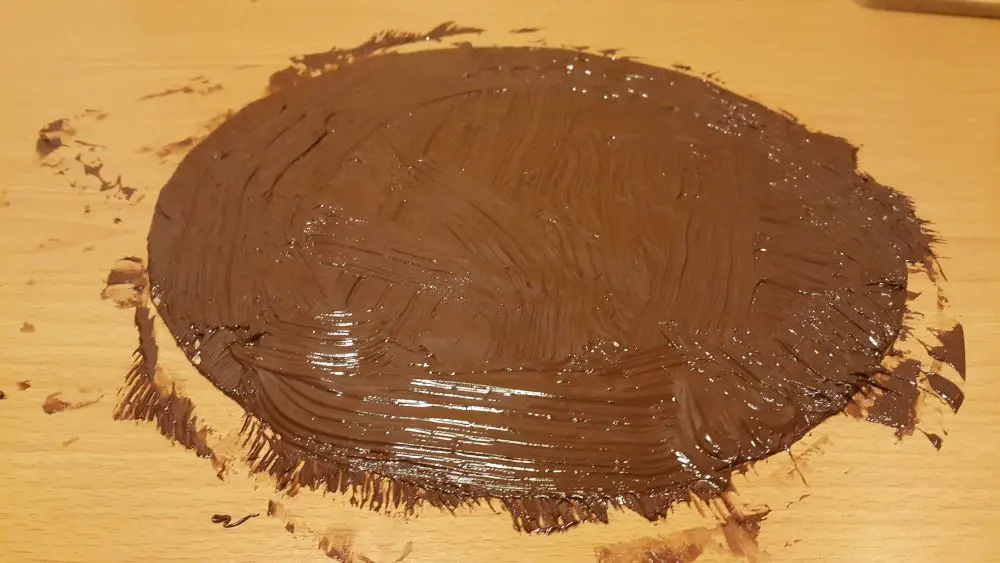
Then grab the sides with two fingers, turn it around and place it on the cake. Smooth it on the surface and press a little at the sides, then place in the fridge till it hardens.
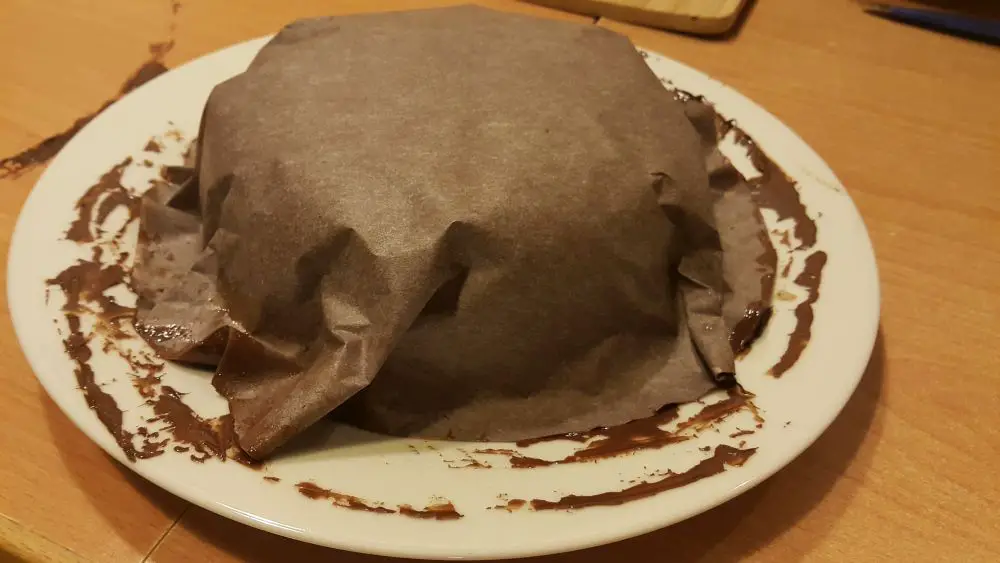
When the chocolate is hard, carefully remove the paper.
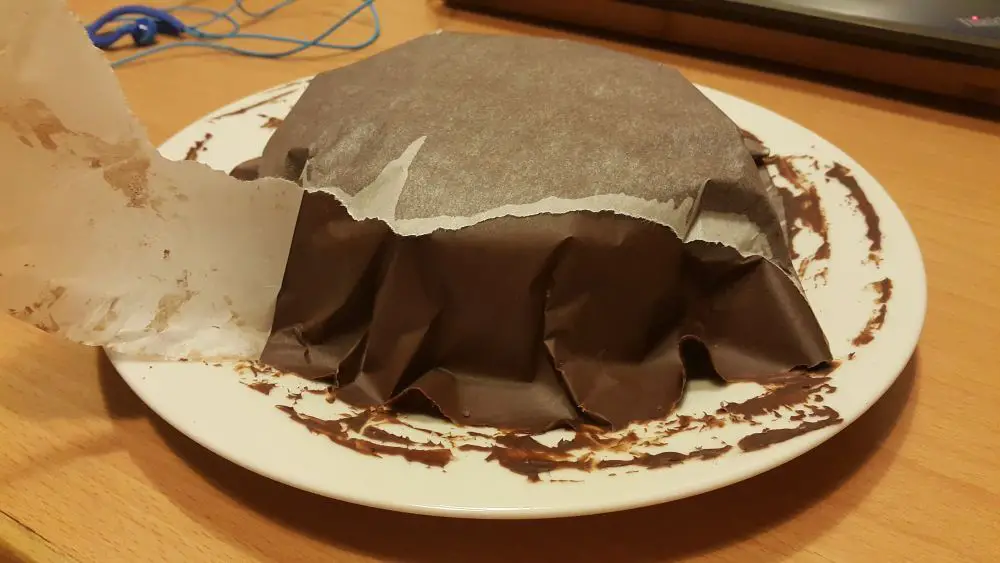
Then clean the plate by scrubbing big bits with a knife and wipe the rest with a warm wet cloth and a dry one after.
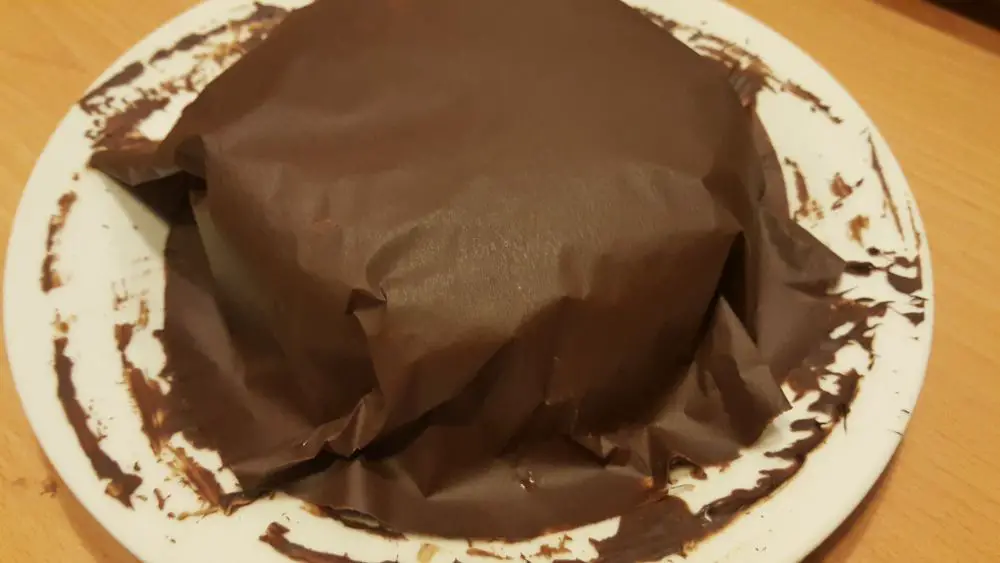
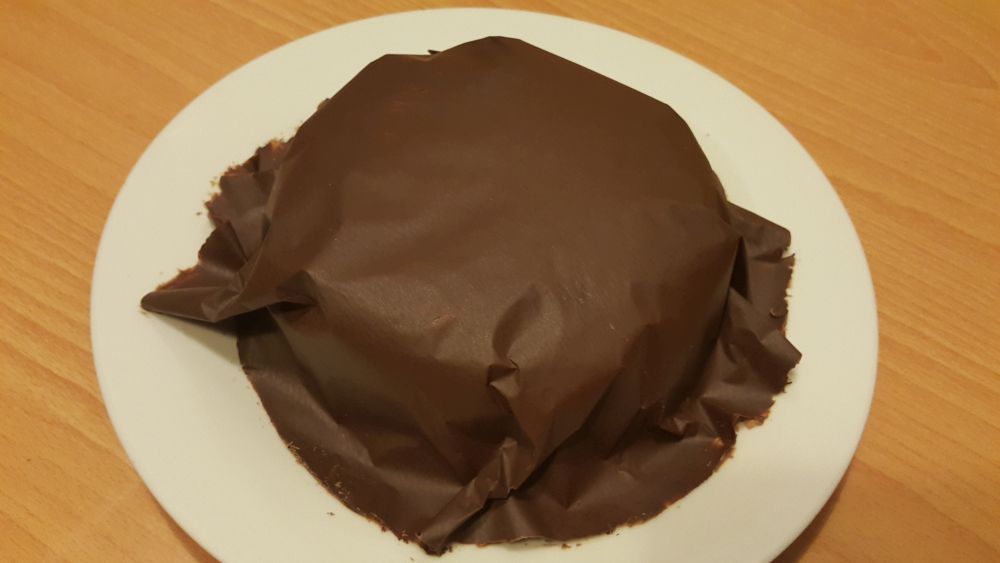
Warm up the knife before cutting to avoid the chocolate crust from cracking.
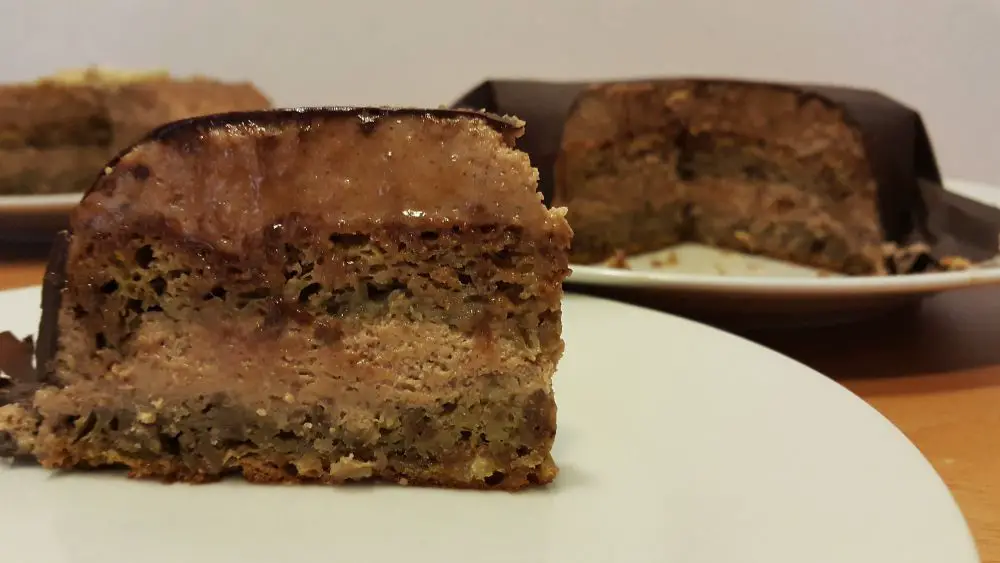
Dober tek!

